Maritime Safety - Enclosed Space Safety
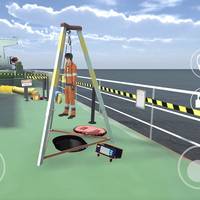
It's nearly 45 years since the tragedy on the ANCO Duke where seven crew died at the bottom of the tank they were cleaning. “I was working on chemical tankers then. All the crew felt this terrible loss of life and took on tank entries with a heightened safety focus,” says Captain Dave Watkins, Deputy Director of the confidential near-miss reporting service CHIRP Maritime. Since then, enclosed space deaths still occur, although not in the number they did.Watkins has years of experience on chemical and VLCC tankers as an officer and master…
Monitored Confined-Space Entry
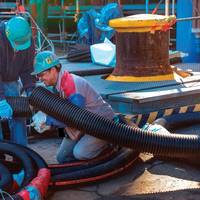
Protecting Workers, and Ensuring Safe Sailing for the Maritime Industry. The cable-laying vessel GS Global Sentinel was undergoing repair work. Shipyard workers and members of the ship’s crew found a mysteriously high hydrogen sulfide reading in a confined space on board that created a toxic environment. They could not understand why. What caused this potentially lethal scenario? After investigation and safe entry into the tank, crewmembers of the vessel and shipyard workers discovered…
Barge Operator Fined for Releasing Dangerous Gas
The operator of a Portsmouth-based barge has today been made to pay almost £111,000 in fines and costs after pleading guilty to a breach of maritime legislation. Serco Ltd. admitted an offence at Portsmouth Crown Court in relation to the health and safety of workers aboard the barge 1706, which is operated as part of a service contract with the U.K. Ministry of Defense. The primary function of the barge is to collect waste products from naval vessels when they were moored in Portsmouth. On July 6, 2011, barge 1706 was secured alongside a warship at Portsmouth Naval Base and was taking waste water from the vessel. A short while later, the crew started to smell the distinctive 'rotten eggs' odor of hydrogen sulphide (H2S).
Kirk Petrophysics Cuts to the Core

Global leaders in the oil and gas industry will descend on the U.K. for an annual technical day organized by Reservoir Group member company Kirk Petrophysics. Experts from across the field will lead the discussions at the event, which is being held at the firm’s newly expanded Core Center in Guildford next month. Specialists from leading international firms including Schlumberger, Dhahran Carbonate Research Center, SGS and Empirica will be among those attending the event. The technical day on May 30 will provide insight into the latest techniques being used in the coring industry.
New Gas Detector from Martek
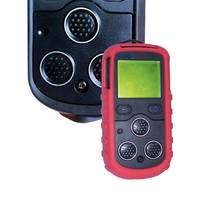
Maritime safety equipment innovator, Martek Marine, has released a MED-certified portable gas detector that can be easily and safely recalibrated onboard, providing tamperproof certification to meet the many regulations governing detector calibration. The Paris and Tokyo MOUs and oil major criteria require calibration records to be kept for all fixed and portable gas detectors onboard. Martek’s Marine 4 is supplied with a self-certification/calibration station which provides the user with fail-safe automatic bump testing and calibration.
EMSA Vessel to Assists with Bunker Oil Removal
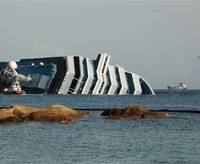
The EMSA-contracted Stand by Oil Spill Response Vessel Salina Bay arrived this weekend on site of the Costa Concordia to assist SMIT Salvage, who is in charge of the bunker removal and pollution response operations. Preparations are on-going for the removal of the bunker oil from the grounded cruise ship Costa Concordia. The Salina Bay will be -as a precautionary measure- on stand-by during this operation over the next weeks. The Salina Bay is equipped with several oil recovery systems, as booms, skimmer, sweeping arms and a dedicated radar slick detection system.
Det-Tronics Gains Approval for Gas Detector
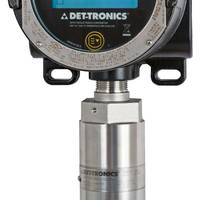
Det-Tronics Adds IP66/67 Approval to Existing Ultra-Fast Hydrogen Sulfide Gas Detector; Detector approved for Class I, Div 1 locations including locations that require IP66/67. Detector Electronics Corporation (Det-Tronics), a provider of industrial fire detection, gas detection, and hazard mitigation systems, announces that its Nanotechnology Metal Oxide Semiconductor hydrogen sulfide gas (NTMOS H2S) detector has earned approval for use in locations that require an ingress protection rating of IP66/67, ideal for petrochemical, oil and gas applications (http://ntmos.det-tronics.com).
Martek Gas Detection Contract with Canadian Navy
UK-based Martek Marine has signed a breakthrough contract with the Canadian Navy. The deal will see Martek supply 12 MM2000 marine gas detection systems, with Hydrogen Sulphide (H2S) capability, to the Canadian Navy’s fleet of Halifax-class multi-role patrol frigates based in Victoria, British Columbia, and Halifax, Nova Scotia. This is the first contract that Martek, one of the leading manufacturers of marine safety and environmental monitoring systems, has secured with the Canadian Navy and the H2S monitoring technology will be fitted on the Halifax-class ships while they are in port over the next 12 months. Steve Coulson, Business Development Director…
Martek Awarded Wheelmark Approval
Martek Marine were awarded the Marine Equipment Directive (MED) ‘wheelmark’ approval for their range of fixed gas detection systems. The systems can be used on any type of vessel where there is a potential danger of a fugitive gas leak. The systems are most commonly used on LNG and LPG carriers as well as all types of tankship, from bunkerbarges to ULCC’s. The MM6000, is the only intrinsically safe infra-red gas detector in the world approved for use in gas dangerous spaces on LNG carriers. MM2000 combined with MM1200 & MM1000 gas detectors is the only addressable gas detection control system on the market to carry MED certification.



